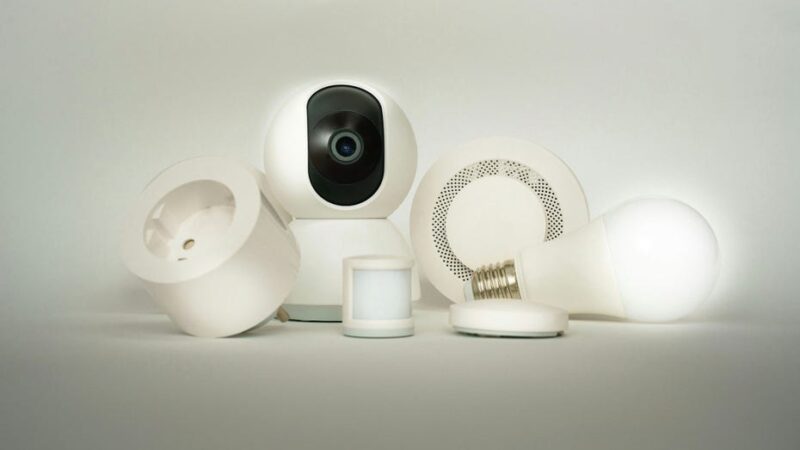Are Your Smart Home Cameras Watching You? Eye-Opening Insights on Data Collection

Smart home cameras have swiftly transitioned from luxury items to household essentials. They provide peace of mind by allowing users to monitor their homes both inside and out, even when they’re away. However, while these devices offer numerous advantages, they also present significant privacy concerns. Recent research reveals a startling trend: outdoor security camera applications are among the leading offenders in data collection.
The Data Collection Dilemma
According to a comprehensive study by Surfshark, outdoor security camera apps are notorious for gathering excessive user data. On average, these applications collect about 12 pieces of information, significantly more than typical smart home devices, which average around eight data points. This includes sensitive personal information such as email addresses, phone numbers, payment details, and precise location data. Alarmingly, many of these apps link up to seven of these data points directly to individual identities, exposing users to potential privacy violations.
Indoor security cameras, while slightly less invasive, still raise concerns. These applications collect an average of nine data points, with six often connected to user identities. Common types of collected data include user IDs, device IDs, purchase history, and even audio recordings. Though this information can enhance user experience, it simultaneously elevates the risk of privacy breaches.
What Data Are They Collecting?
One major concern revolves around the type of data being collected by both outdoor and indoor security camera apps. Many applications request personal information such as names, email addresses, phone numbers, and physical addresses. Notably, some apps—like Arlo, Deep Sentinel, and D-Link—extend their data collection to include information about your contacts, which can be accessed by third parties, even though such data is unnecessary for the app’s functionality.
Highlighting the most data-hungry applications, Deep Sentinel and Lorex dominate in the outdoor camera segment, each collecting 18 out of a possible 32 data points. Meanwhile, Nest Labs leads the indoor camera market, gathering 17 data points, with Ring and Arlo not far behind at 15.
The Lack of Regulation and Its Implications
The absence of regulations governing smart home devices exacerbates privacy risks. Without stringent guidelines, users are left vulnerable to data breaches, cyberattacks, and even physical dangers. Some applications track users for targeted advertising or share data with third-party companies and data brokers. While outdoor cameras typically refrain from tracking, indoor systems like Nooie and Canary Connect engage in user monitoring, further complicating the privacy landscape.
How to Safeguard Your Privacy
Given the potential risks, it’s crucial to take proactive measures to protect your privacy when using smart home cameras. Here are several steps to consider:
Limit Data Sharing
Look for camera apps that allow control over data sharing. Many applications provide settings to disable unnecessary data collection features like location tracking and audio recording.
Regularly Update Privacy Settings
Smart home camera apps frequently undergo software updates that may alter privacy settings. Regularly review these settings to ensure they align with your preferences, disabling any non-essential features.
Utilize Strong Passwords and Two-Factor Authentication
Secure your camera applications and associated accounts with strong, unique passwords. Consider employing a password manager for generating and storing complex passwords.
Be Mindful of Camera Placement
Position your cameras thoughtfully to minimize the collection of sensitive data. Avoid placing cameras in private areas, such as bedrooms or bathrooms.
Consider Local Storage Options
Some cameras offer local storage alternatives, allowing you to save footage on devices like hard drives or SD cards rather than in the cloud. This method enhances security by reducing online exposure.
Use a VPN
Enhance your privacy by encrypting your internet connection with a Virtual Private Network (VPN). This additional layer of protection makes it more challenging for hackers and third parties to intercept your data, especially on public Wi-Fi networks.
Stay Informed on Privacy Policies
Regularly review the privacy policies of your devices and applications. Stay updated on how your data may be collected, stored, and shared.
Evaluate Home Security Systems
When considering home security systems, opt for those with robust physical security features. Be aware that, like all smart devices, these systems may also collect user data.
The Importance of Awareness
The rapid growth of Internet of Things (IoT) technology has transformed our lives, but it has also raised significant privacy concerns. Without proper regulations, companies may prioritize profit over user safety, leading to devices with vulnerabilities. Many smart home cameras gather more data than necessary and lack transparency regarding its use, which could result in data being sold to third parties or used for targeted advertising.
Are you comfortable with the amount of data your smart home devices collect? Share your thoughts and experiences with us.
For ongoing tech tips and security alerts, subscribe to our newsletter for valuable insights and updates.
